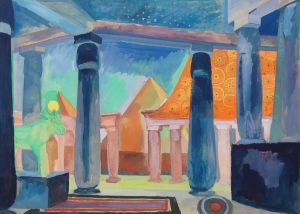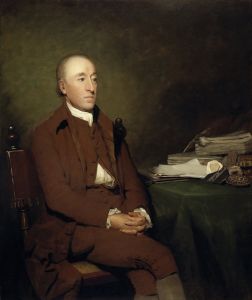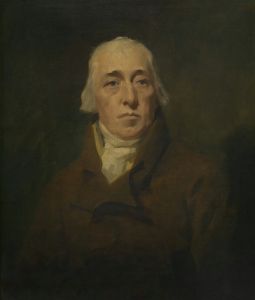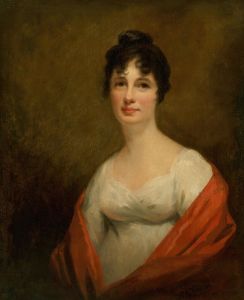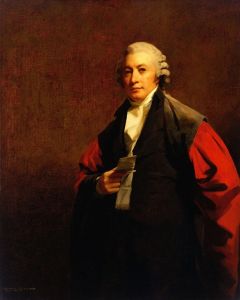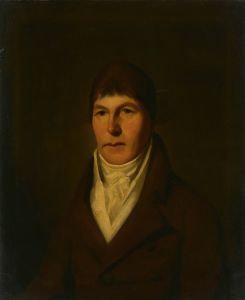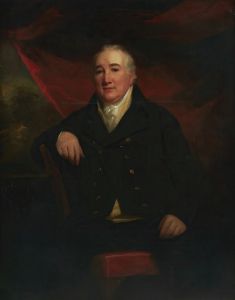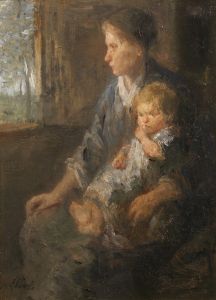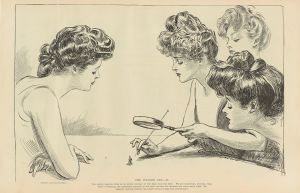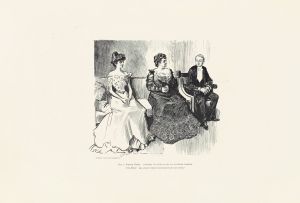
Mrs Farquarson Of Finzean
A hand-painted replica of Sir Henry Raeburn’s masterpiece Mrs Farquarson Of Finzean, meticulously crafted by professional artists to capture the true essence of the original. Each piece is created with museum-quality canvas and rare mineral pigments, carefully painted by experienced artists with delicate brushstrokes and rich, layered colors to perfectly recreate the texture of the original artwork. Unlike machine-printed reproductions, this hand-painted version brings the painting to life, infused with the artist’s emotions and skill in every stroke. Whether for personal collection or home decoration, it instantly elevates the artistic atmosphere of any space.
"Mrs. Farquharson of Finzean" is a portrait painting by the renowned Scottish artist Sir Henry Raeburn. Raeburn, born on March 4, 1756, in Edinburgh, Scotland, is celebrated for his masterful portraits of prominent figures in Scottish society during the late 18th and early 19th centuries. His works are known for their vivid realism, insightful character portrayal, and skillful use of light and shadow.
The subject of the painting, Mrs. Farquharson of Finzean, is depicted in a manner typical of Raeburn's style, which often emphasized the dignity and individuality of his sitters. The painting captures Mrs. Farquharson in a poised and elegant stance, reflecting the social status and refined character of the sitter. The exact identity of Mrs. Farquharson is not extensively documented in historical records, but she is associated with the Farquharson family of Finzean, a notable Scottish family with historical ties to the region of Aberdeenshire.
Raeburn's technique in this portrait, as in many of his others, showcases his ability to render textures and fabrics with remarkable precision. The attention to detail in Mrs. Farquharson's attire, including the delicate lace and rich fabrics, highlights Raeburn's skill in capturing the nuances of his subjects' clothing, which was often a marker of their social standing.
The background of the painting is relatively simple, drawing attention to the sitter herself. This compositional choice is characteristic of Raeburn's work, where the focus remains on the individual rather than on elaborate settings or backgrounds. The use of light in the portrait is particularly noteworthy; Raeburn employs a soft, natural light that enhances the three-dimensionality of the figure and adds a lifelike quality to the painting.
Sir Henry Raeburn's portraits are significant not only for their artistic merit but also for their historical value, providing a visual record of Scottish society during his time. "Mrs. Farquharson of Finzean" is a fine example of his work, demonstrating his ability to convey the personality and status of his sitters through his adept use of paint and composition.
Raeburn's contributions to portraiture earned him widespread recognition during his lifetime. In 1812, he was elected as a member of the Royal Academy in London, and in 1822, he was knighted by King George IV, further cementing his reputation as one of Scotland's foremost portrait painters.
Today, Raeburn's works, including "Mrs. Farquharson of Finzean," are held in high esteem and can be found in major art collections and museums around the world. These paintings continue to be studied and admired for their artistic excellence and their ability to provide insight into the lives and appearances of individuals from a bygone era.





